Christine had been craving pancakes, so we whipped some up from scratch on Sunday morning. I mixed the first batch, and she took the photos with the new camera.
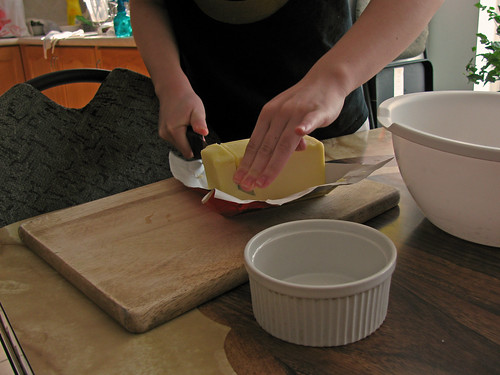
Start by melting 4 tbsp butter. Normally, I would have taken out the butter the night before, and left it at room temperature so that the butter is soft but not melted. I forgot that we were making pancakes, so we just melted some cold butter in the microwave.
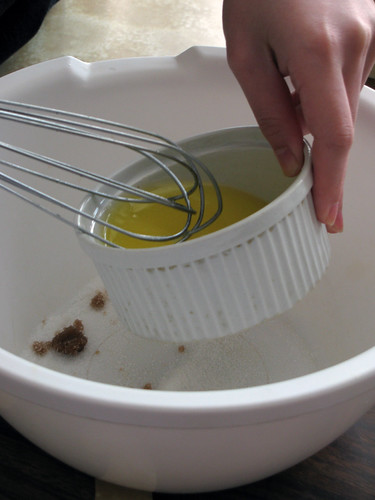
While the butter is heating up, combine 2 tbsp sugar, ¼ tsp salt, and 1 tsp vanilla in a bowl. Add butter, and mix well.
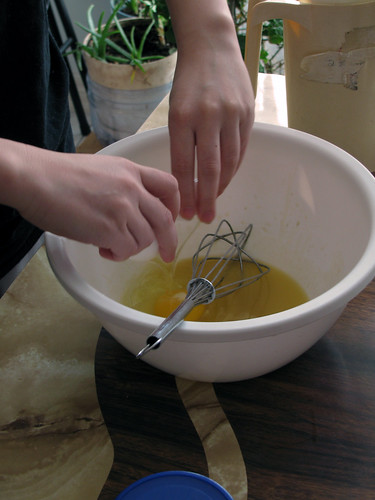
Add 2 eggs to the mixture. These eggs should be at room temperature. If they aren't, you may risk having them cook and scramble in the butter mixture. Whisk together well, until the mixture starts to lighten.
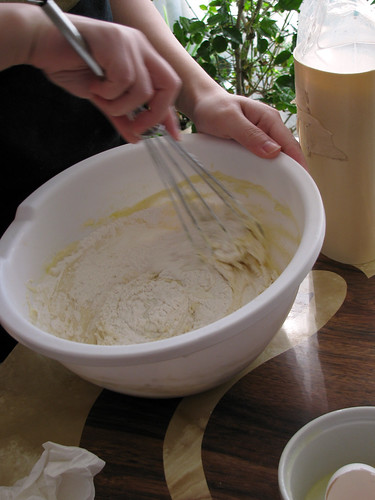
Add 2 cups flour, 2 tsp baking powder, and 1 tsp baking soda to the bowl. Stir lightly. Slowly pour ½ cup milk as you mix. You may need to add more or less milk, depending on the consistency of the batter. The milk should be at room temperature, but if it isn’t, that’s not a problem. You will notice, though, that your batter will be slightly thicker because the cold milk cools down the butter mixture.
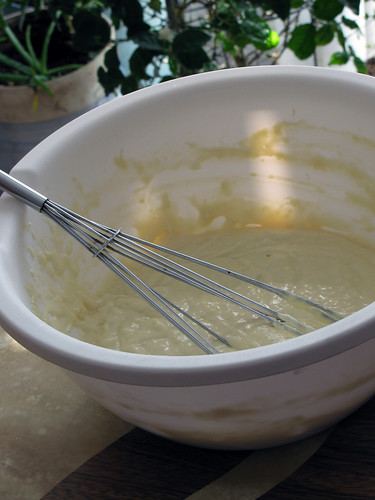
Take care not to over-mix the batter. It should be thick, and there should be lumps remaining. If you are trying to get it completely smooth, you will beat out the air and end up with flat, rubbery pancakes.
Let the batter sit for at least 10 minutes to let it settle.
Heat up a pan to medium-high with a small pat of butter and about 1 tsp canola oil. You don’t want to be deep-frying the pancakes, just enough so that they don’t stick to the pan. I suggest using a non-stick pan for this.
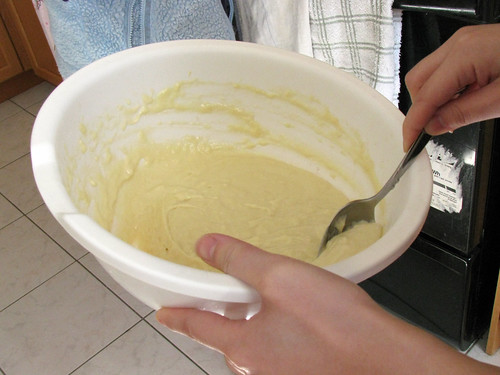
Drop 2 tsp batter into the pan to form one pancake. Don’t worry if it doesn’t look round. As the batter heats up, it will relax into a quasi-round shape.
Make sure the heat isn’t up too high. If the oil smokes, turn down the heat, remove the pan, and wait for the pan to stop smoking. You need a medium-high heat to brown the pancakes and cook them through. Otherwise they will be both burned and undercooked at the same time. You’ll probably have to readjust the heat constantly, unless you have an electric griddle.
You should also beware of having the heat down too low. The heat will cause the bubbles to rise and pop before cooking and setting. You will essentially cook out the bubbles, which will result in flat, rubbery pancakes.
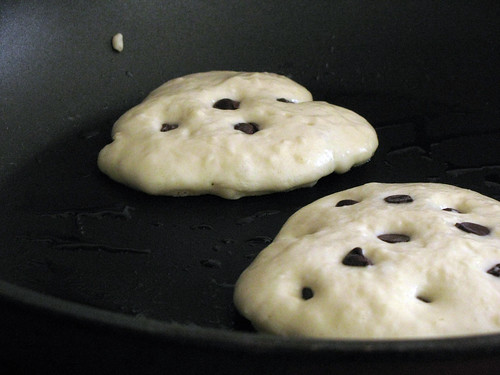
If you want to add blueberries or chocolate chips, add them after you’ve dropped the batter into the pan. Mixing them into the batter will create irregularly-shaped pancakes because the batter won’t be able to spread uninhibited by little knobby things. Also, make sure to push the blueberries/chocolate chips all the way down, so they won’t burn when you flip them over.
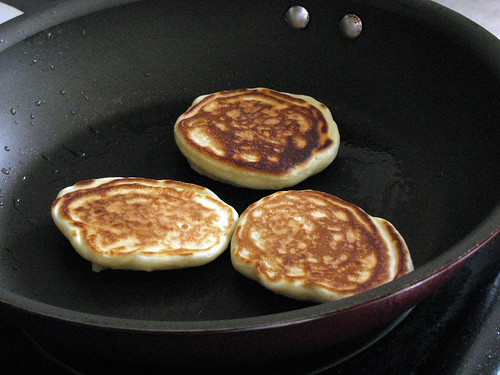
Look for bubbles to rise to the surface and slightly cooked edges before you flip the pancakes. If you’re unsure, use a spatula to peek at the bottom. They should be golden brown and spotty.
Flip the pancakes and let them cook for less than a minute. It takes much less time on the second side because you’ve already heated up the pancake batter on the pan. Again, it should look golden brown, though less spotty.
There aren’t any pictures of stacks and stacks of pancakes because we were snacking on them throughout and eating platefuls from the pan. Yummy!
No comments:
Post a Comment
We'd love to hear your thoughts!